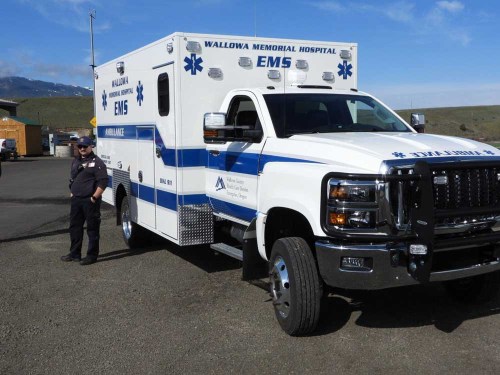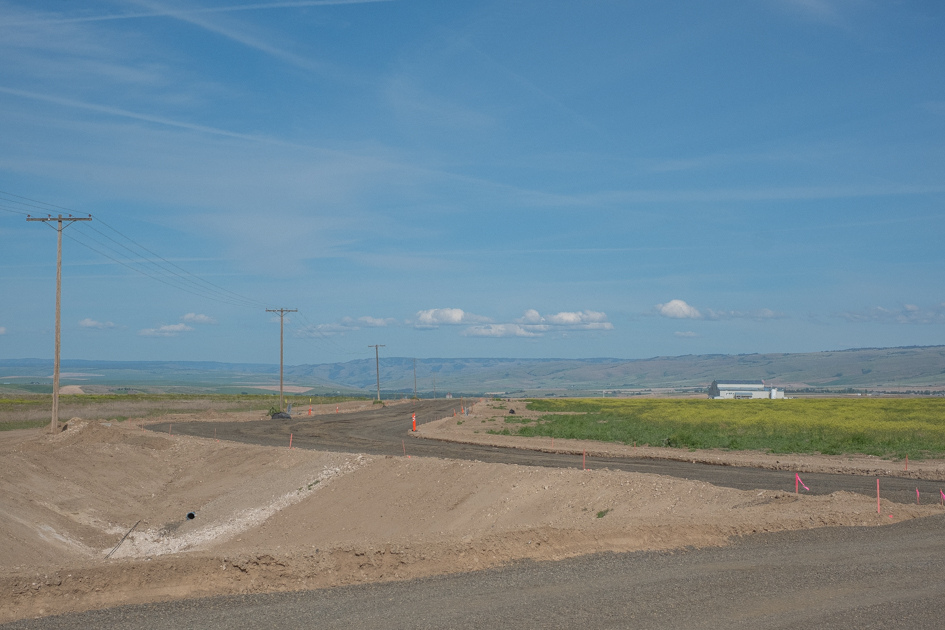Wallowa Memorial’s new ambulance packed with safety features
Published 7:00 am Saturday, June 1, 2024

- Wallowa Memorial Hospital emergency medical technician Kyle Alexander shows off the new ambulance on April 15, 2024.
ENTERPRISE — It took more than a year — not to mention $325,000 and one three-day 2,100-mile road trip — but Wallowa Memorial Hospital finally has its newest ambulance.
The hospital received its new four-wheel-drive ambulance March 29, after Timothy Peck, the hospital’s emergency services director, flew to Dallas, Texas, took delivery of the vehicle and then drove it back to Enterprise.
The new vehicle didn’t go into service right away, though. Workers installed a two-way radio, transferred the power load stretcher system from the ambulance that’s being retired from service and mounted additional supplies and equipment.
The new ambulance rolled into service April 5, with three calls, including a trip to a Boise hospital with a patient transfer.
It’s part of the hospital’s fleet of four ambulances and will provide service throughout the county.
A donor, wishing to remain anonymous, provided $150,000 to help buy the new rig. The rest of the money came from the community at last fall’s Healthy Futures Dinner Auction.
The new ambulance replaces a 2008 Ford rig, Peck said.
“As ambulances age, maintenance and repair costs begin to increase, as well as a decrease in reliability,” Peck said. “This new purchase replaced a 16-year-old ambulance that was increasingly becoming unreliable and costly to maintain.”
This new ambulance comes with a number of other advantages over its predecessor, he said.
“Improved safety designs and (a) more reliable power plant for operating medical equipment, and reduced cost of operations are significant factors,” Peck said, but added that the ambulance’s attributes don’t end there: Its configuration allows a greater ability to provide the higher level of care that is often required for patients.
Also, he said, the new ambulance is more comfortable for patients — and for attendants.
“A benefit of our new design is realized when a critical patient needs a team around them to manage multiple treatment modalities — critical patients often need two or three attendants,” Peck said.
“This design gives more room to work efficiently, keep attendants more secure, and give better space to operate complex pieces of patient equipment,” such as ventilators, blood and fluid warmers, lab equipment and advanced monitors.
“This unit also has greater room to carry an infant transport isolette (called a BabyPod), which provides a warm and accessible environment for the distressed newborn,” Peck said.
The ambulance’s focus on safety extends to the vehicles with which it shares the road, Peck said.
“This vehicle is also equipped with a HAAS Alert, which sends signals to surrounding traffic that an emergency vehicle is approaching or operating on the highway,” he said; notifications pop up on smartphones or on in-vehicle navigation systems, “which creates an extra layer of community and responder safety.”
The system also provides information about the vehicle location for the benefit of crew members, he said, adding that with system upgrades planned for this fall, dispatchers will be able to visually locate the emergency vehicle and monitor its travel throughout the county, Peck said.
The ambulance was purchased over a year ago, but even that process was convoluted, he said. Hospital officials reviewed several manufacturers beforehand, and learned that the average delivery time was at least two years from the date of purchase due to supply chain issues with conventional ambulance chassis. And there was no guarantee that one would become available.
“This particular chassis was one of a few left that we felt met our needs that was available, so it was purchased and put in line for the ambulance build last year,” Peck said.
Peck said it hasn’t yet been determined what will happen to the old ambulance; the vehicle may be recycled or repurposed.





